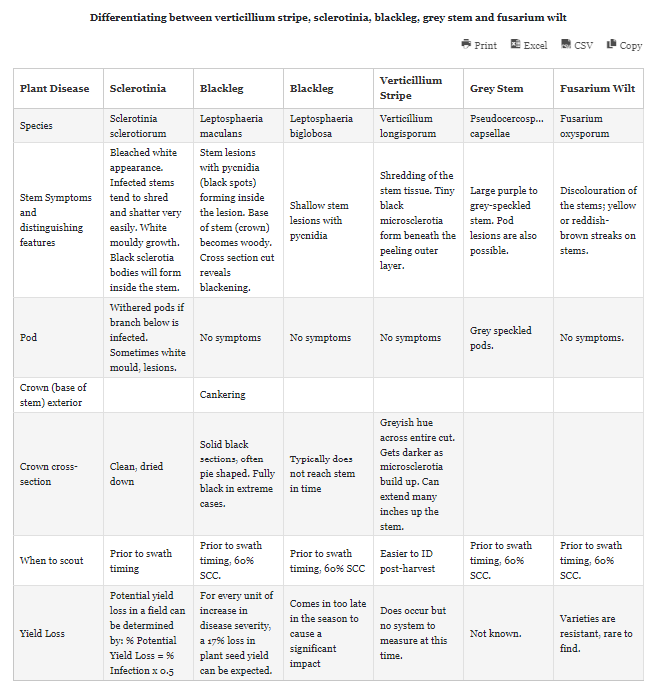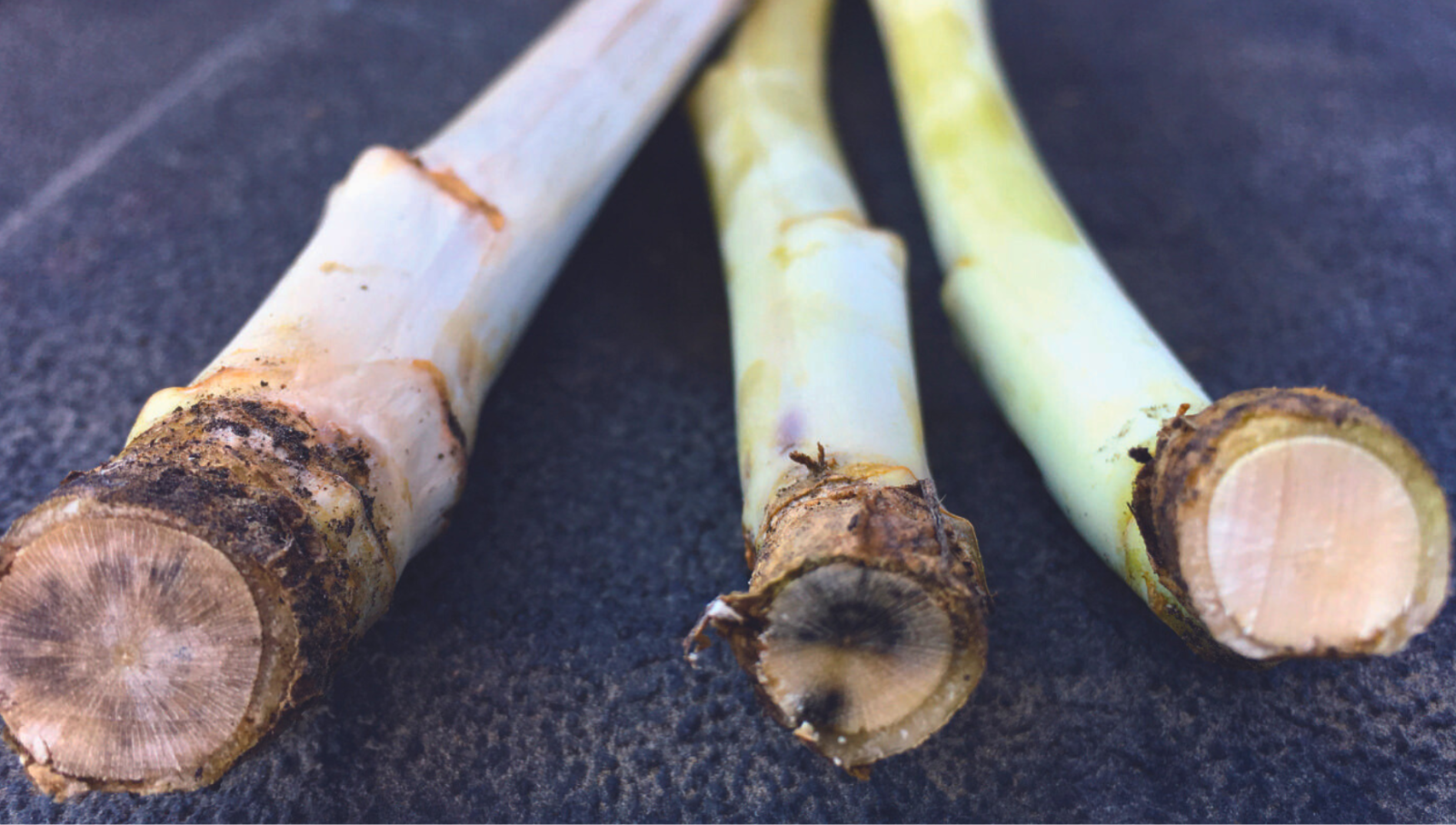In 2014, researchers detected verticillium stripe, caused by the pathogen Verticillium longisporum, in canola in Manitoba. This disease has since spread across the Prairies and is known to cause yield loss. The soil-borne fungus infects the roots and travels up the xylem in the stem, eventually plugging it and cutting off the flow of nutrients. The Canola Encyclopedia provides a graphic of the disease cycle. Verticillium stripe, caused by V. longisporum, affects canola in Western Canada, while verticillium wilt, caused by V. dahliae, is a common troublemaker in various other crops worldwide.
Now that we know about the pesky verticillium stripe, how do we spot it? We’ve gathered some tips from Canola Council of Canada to help you out.
Distinguishing Features of Verticillium Stripe:
Stem Striping
When the canola crop is at full height but still green, infected plants will often show a two-toned stem – one half healthy and green, the other half discoloured and drying out. This half-stem senescence is where the “stripe” name comes from. You won’t see this with blackleg or sclerotinia stem rot. While sclerotinia can cause stem discolouration, it won't stripe half the stem. The only other disease that causes similar symptoms is fusarium wilt, but luckily, current canola cultivars are resistant to that pathogen.
Stem Cross Section Discolouration
Verticillium stripe is a sneaky invader that infects roots and makes its way into the plant’s vascular system. The verticillium hyphae and conidia clog up the system, blocking water and nutrients from getting through. This gives the stem cross-section a greyish hue, which can easily be mistaken for blackleg. But don't worry, we've got two tips to tell them apart:
-
With blackleg, the stem tissue infection is darker and forms distinct black wedge shapes. Verticillium, on the other hand, is a lighter grey, more spread out across the cross-section, and can look like a starburst pattern.
- Also, blackleg stem discolouration is usually confined to the crown area at the base of the stem, while verticillium darkening can extend well up the stem.
Stem Peeling and Weakening
Peeling stem skin is a telltale sign of verticillium stripe. Underneath that peeled layer, you'll find the microsclerotia, often forming faint black/grey discoloration. Severely diseased stems might break off, which can be mistaken for lodging. Sclerotinia stem rot also causes weakened, brittle stems, but it won't have those stripy, speckly microsclerotia. Instead, sclerotinia stem rot shreds the entire stem tissue, not just the outer layer.
Black Specks
As verticillium infection progresses, you'll notice microsclerotia forming on the underside of peeling stem skin, and they can be found all the way up the stem. These tiny verticillium specks might look similar to blackleg pycnidia, but they're much smaller – think powdery pepper. Sometimes, blackleg pycnidia will have a purple-pinkish ooze of pycnidiospores around them. Plus, blackleg pycnidia are confined to a lesion no more than a couple of centimeters in size. So, if you spot pink and specks confined to a lesion, it's blackleg.
Click here to watch a video from Canola Watch on how to collect canola samples for Verticillium Stripe testing.

Photo source: Canola Council of Canada
Scouting and Testing
The best time to scout for this disease is just before or right after harvest when the symptoms are most obvious. Check out the Identifying Verticillium Stripe video from Canola Council for some awesome scouting tips! Watch it here.
For final confirmation, you can send plant tissue samples to labs like PSI Labs, Discovery, and 20/20 for testing. Additionally, we’ve included a chart below on differentiating between various canola diseases to help with your scouting. Happy scouting!

Source: Canola Council of Canada



